

• JULY 2 New Moon begins at 2:16 PM CDT.
• JULY 4 The planet Earth is at aphelion, the furthest point in its orbit around the Sun, at a distance of 94.5 million miles (5:00 PM CDT).
On this day in the year 1054, Chinese, Japanese, and Arabic astronomers record seeing SN1054, a supernova whose remnant we now call the Crab Nebula (Messier 1). The event could be seen with the unaided eye for a total of 642 days (for 23 of those days, it could be seen during the day).
• JULY 5 Moon is at perigee, the closest point in its orbit, at 226,009 miles (12:00 AM CDT).
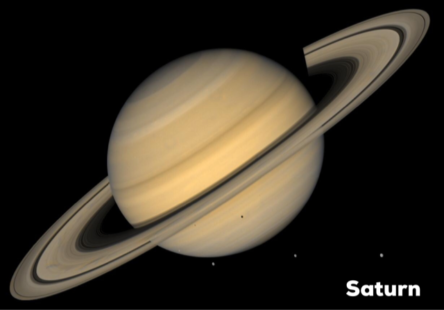
• JULY 9 Saturn is at opposition. When an outer planet is at opposition, it lies directly opposite the Sun in our sky. So, as the Sun sets in the west, the planet will be rising in the east. Opposition is usually the best time to observe a planet as it is close to Earth in its orbit and because the planet is up all night long
Moon is at first quarter.
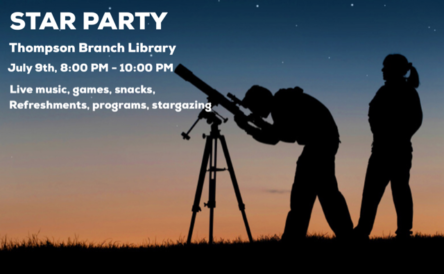 Stargazing Party-Thompson Branch Library
Stargazing Party-Thompson Branch Library
Join the Central Arkansas Astronomical Society and the Central Arkansas Library System for a family friendly star party: learn about the night sky and enjoy live music, games, light snacks and refreshments! Starting at 8:00 pm: introduction to stargazing and CALS library telescopes followed by stargazing party – weather permitting. No registration required. All ages welcome!
• 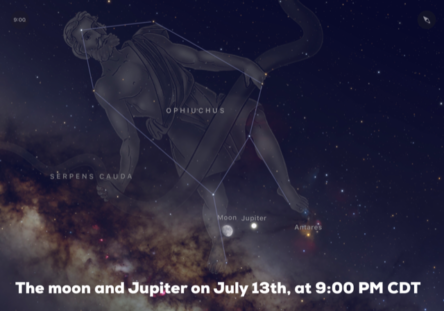 JULY 13 Look for the waxing gibbous moon this evening just to the east of Jupiter in the constellation of Ophiuchus.
JULY 13 Look for the waxing gibbous moon this evening just to the east of Jupiter in the constellation of Ophiuchus.
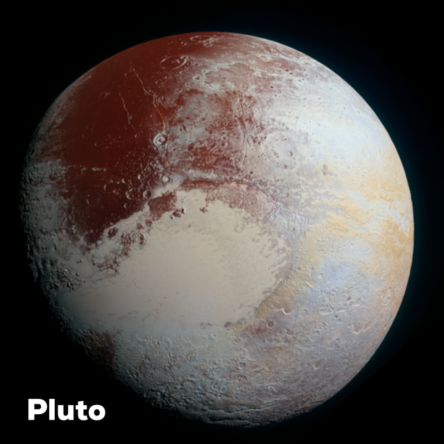
• JULY 14 Dwarf planet Pluto is at opposition on this night. With a large enough telescope (say, 10” or larger) and the aid of a chart, you can see it just to the east of Saturn after midnight in the constellation of Sagittarius.
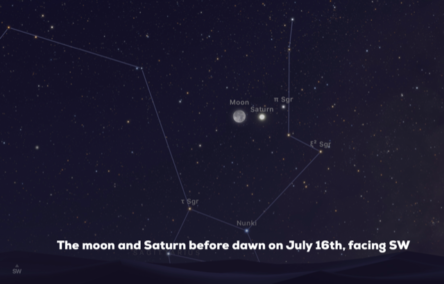
• JULY 16 Look to the SW during the hours before dawn to see the moon and Saturn less than one degree apart.


• JULY 17 On this day in 1850, the first stellar photograph was made of the star Vega (in the constellation Lyra) by William Cranch Bond and John Adams Whipple using the 15 inch refractor at the Harvard College Observatory. The photo is yet to be digitized.
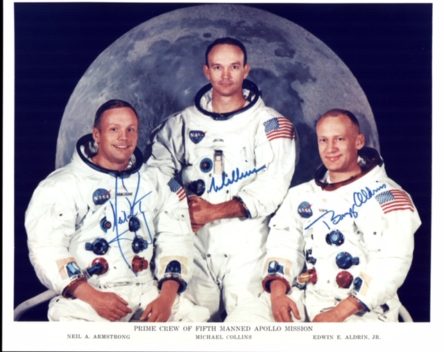
• JULY 20 50 years ago on this date, history was made when Apollo 11 astronauts Neil Armstrong and Buzz Aldrin became the first human beings to set foot upon the moon. Astronaut Michael Collins remained in orbit aboard the command module.
• JULY 24 First quarter moon occurs at 8:18 PM CDT.
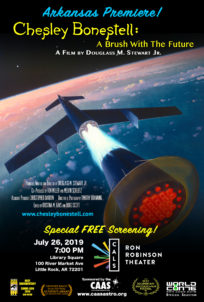
• JULY 26 Chesley Bonestell: A Brush With the Future — Come to the Central Arkansas Library’s Ron Robinson Theater to see this award-winning documentary about space artist Chesley Bonestell. Bonestell’s work during the 1950’s inspired many to become astronomers, aerospace engineers, astronauts, science fiction authors, and film makers. Admission is free, courtesy of the UA Little Rock Arkansas Space Grant Consortium and the Central Arkansas Astronomical Society.
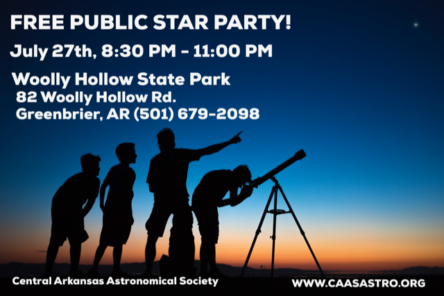
• JULY 27 Free Public Star Party at Woolly Hollow State Park from 8:30 PM to 11:00 PMJoin members of the Central Arkansas Astronomical Society as they act as your tour guides across the night sky. Look through their telescopes to see the planets Jupiter and Saturn, double stars, galaxies, nebulae and more. The event is free and open to everyone.
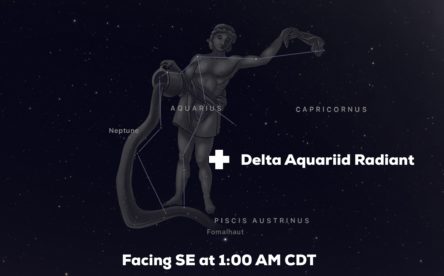
• JULY 28 This is the nominal peak for the Delta Aquariid Meteor Shower. The Delta Aquariids are a long, drawn out meteor shower that runs from around mid-July to late August (it even overlaps the more famous Perseid Meteor Shower that occurs each August). There will be no moon to interfere during the peak. Start looking after midnight (you will probably see the most meteors from around 2:00 AM up until dawn) and expect to see, at most, 10-20 meteors per hour. Delta Aquariids are rather faint, so make sure that you view from a dark sky locale. Follow this link to locate a good observing site: https://darkskyarkansas.org
• JULY 31 New moon officially occurs at 10:12 PM CDT